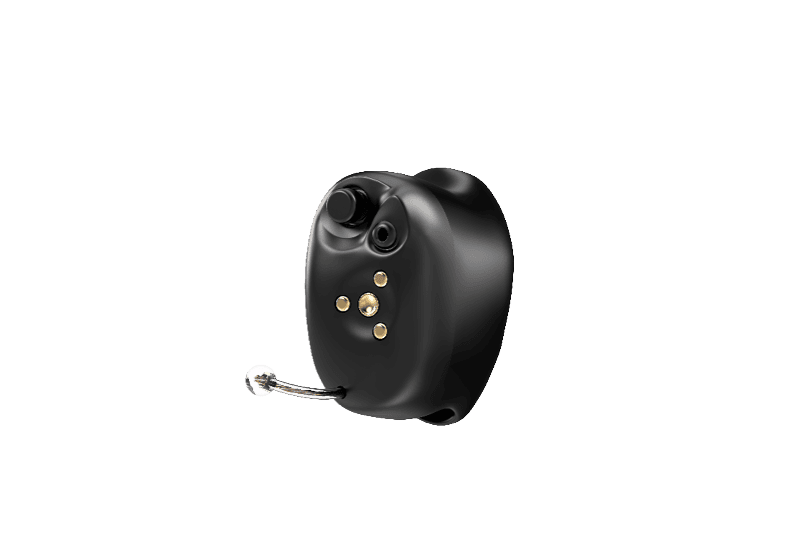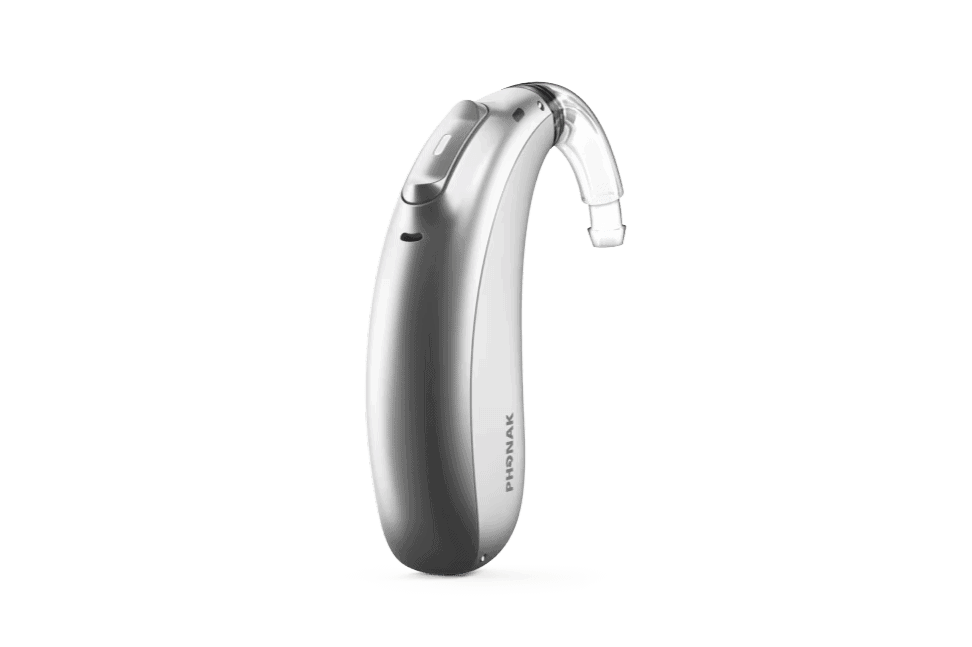Hearing Aids
Prescription Hearing Aids
There are various styles that hearing aids come in but all devices contain the same basic components: microphone, amplifier, speaker/receiver, and a battery source. These components are positioned in hearing instruments in various locations, depending on the style. It is important to know that certain hearing aid styles are more suitable for a specific degree of hearing loss (mild, moderate, profound). The six major styles that hearing aids are available in are:
Invisible-In-Canal (IIC)
Invisible-In-Canal hearing aids are custom molded to fit fully and comfortably inside your ear canal. With the IIC style, it is often completely invisible to other people. These are the smallest type of hearing aid on the market.

Completely-In-Canal (CIC)
CIC devices are also custom molded and fit fully inside your ear canal. Unlike the IIC style, CIC types include a tiny handle that sticks out of the ear canal for quick and easy insertion and removal.
In-The-Canal (ITC)
In-The-Canal hearing aids differ from IIC and CIC devices as a portion of the hearing aid sits in the outer ear while the other part is worn in the ear canal. ITC units are visible, yet discreet.
In-The-Ear (ITE)
ITE hearing instruments are made using custom molds of your ear like IIC and CIC types. But what makes ITE devices different is that the majority of the device is worn on the outer ear, while only a small portion sits within the ear canal.
Receiver-In-Canal (RIC)
Receiver-In-Canal hearing aids differ from other styles as the microphone, which pickles up sound from the environment, sits behind the outer ear. A thin metal wire connects this portion of the hearing aid to an earbud or receiver that sits in the ear canal.

Behind-The-Ear (BTE)
BTE hearing aids are quite similar to RIC devices. The major difference between them is that BTE devices use plastic tubing instead of metal to connect the microphone to the receiver which is worn in the ear canal.
Prescription Hearing Aid Technology & Features
Today’s hearing aids are savvy and highly innovative. There are various technologies and features that hearing aids come equipped with. These features are designed to deliver the most enhanced sound quality and to seamlessly integrate hearing aids into your daily life. Below are a few of the available technologies and features that most hearing aids today offer.
Speech Recognition Technology
The newest and latest hearing aids on the market today all include some form of technology that helps improve speech understanding. These technologies help people better understand speech in difficult listening environments (like busy restaurants) that have background noise. With such a diverse range of manufacturers in the hearing aid market, each has created and patented its technology in effectively providing speech understanding to hearing aid users that have background noise and complex sound situations.
Tinnitus Therapy Technology
Tinnitus is one of the most common symptoms of hearing loss. This buzzing or ringing-like noise can be present in one or both ears and can take a toll on communication as well as sleep and capacity to complete daily tasks. Many of today’s hearing aids offer tinnitus masking features that help mask these unpleasant noises.
Bluetooth Technology
As we’ve entered the technological age where streaming is available, many people with hearing loss are also seeking out hearing aids that have direct connectivity technology. Bluetooth connectivity allows hearing aids to connect to other electronic devices, delivering audio directly to your hearing device. This gives wearers the ability to stream music and even conversations from their smartphone or tablet directly to their hearing aids. This offers great sound quality, a more personalized listening experience, and the ability to have hands-free conversations.
Rechargeable Hearing Aids
All hearing aids have a battery source which is what powers the device. While disposable batteries were the most common power source, many of today’s hearing aids offer a rechargeable battery option. So similar to your smartphone, tablet, or laptop; your hearing aids can easily recharge. One could charge the hearing aids overnight and that would allow for a full day of usage.
Why Wait? Change the Quality of Your Life!
Schedule an Appointment
